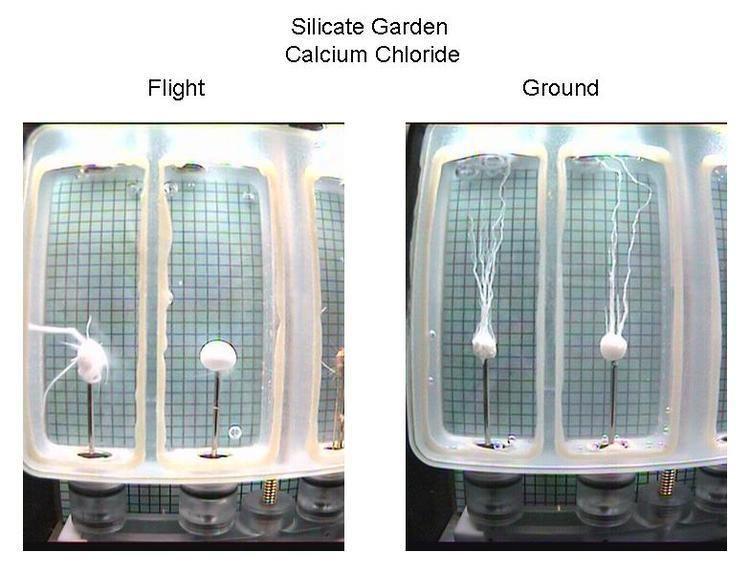 | ||
A decorative garden which is prepared by dissolving the crystals of some salts in water glass is called Chemical Garden.
Contents
.Or in other words.A chemical garden is an experiment in chemistry normally performed by adding metal salts such as copper sulfate or cobalt(II) chloride to an aqueous solution of sodium silicate (otherwise known as waterglass). This results in growth of plant-like forms in minutes to hours.
The chemical garden was first observed and described by Johann Rudolf Glauber in 1646. In its original form, the chemical garden involved the introduction of ferrous chloride (FeCl2) crystals into a solution of potassium silicate (K2SiO3).
Process
The chemical garden relies on most transition metal silicates being insoluble in water and coloured.
A metal salt such as cobalt chloride will start to dissolve in the water. It will then form insoluble cobalt silicate by a double decomposition reaction (anion metathesis). This cobalt silicate is a semipermeable membrane. Because the ionic strength of the cobalt solution inside the membrane is higher than the sodium silicate solution which forms the bulk of the tank contents, osmotic effects will increase the pressure within the membrane. This will cause the membrane to tear, forming a hole. The cobalt cations will react with the silicate anions at this tear so forming new solid. In this way growths will form in the tanks; these will be coloured (according to the metal) and may look like plants. The crystals formed from this experiment will grow upwards, since the pressure at the bottom of the tank is higher than the pressure closer to the top of the tank, therefore forcing the crystals to grow upwards.
The upward direction of growth depends on the density of the fluid inside the semi-permeable membrane being lower than that of the surrounding waterglass solution. If one uses a very dense fluid inside the membrane, the growth is downward. For example, a fresh, green solution of trivalent chromium sulfate or chloride refuses to crystallise without slowly changing into the violet form, even if boiled till it concentrates into a tarry mass. That tar, if suspended in the waterglass solution, forms downward twig-like growths because all the fluid inside the membrane is too dense to float and thereby to exert upward pressure. The concentration of sodium silicate becomes important in growth rate. Although any concentration works, a ratio of 2ml of water to 3ml of sodium silicate works best.
After the growth has ceased sodium silicate solution can be removed by continuous addition of water at a very slow rate. This will prolong the life of garden. In one specific experimental variation a single tube can be obtained
Common salts used
Common salts used in a chemical garden include:
Practical uses
While at the chemical garden may appear to be primarily a toy, some serious work has been done on the subject. For instance this chemistry is related to the setting of Portland cement, hydrothermal vents and during the corrosion of steel surfaces tubes can be formed. A chemical garden helps one to understand the nature of that chemical substance.
The nature of the growth also is useful in understanding classes of related behaviour seen in fluids separated by membranes. In various ways it resembles the growth of spikes or blobs of ice extruded above the freezing surface of still water, the patterns of growth of gum drying as it drips from wounds in trees such as Eucalyptus sap, and the way molten wax forms twig-like growths, either dripping from a candle, or floating up through cool water.
